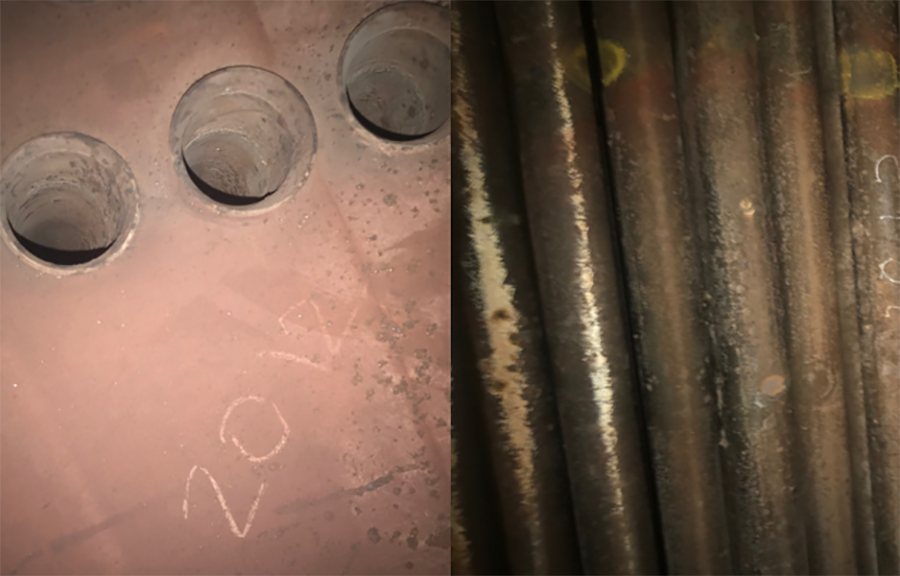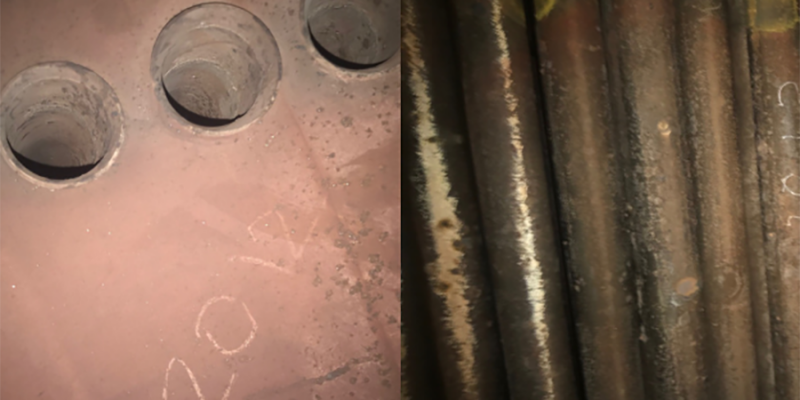
Boiler Inspection: What to Look For?
Part of routine maintenance is an annual boiler inspection. Opening a boiler and looking at the interior condition is a rare chance to see visual evidence of your water treatment program and its consequences. Here are some tips to take full advantage of this opportunity.
How to Prepare
Bring a good flashlight and a camera. Bring a welders crayon if you wish to mark inside the boiler to document location, issues or date.
Are you planning on going inside the boiler? You must have written permission (a confined space permit) and you must complete and document tests for oxygen levels inside the boiler before entering. Never go into a boiler without a designated individual with you to observe from outside the boiler.
Understand where the water is inside of your boiler. In a firetube boiler, heated gas travels through tubes which pass through a sealed container of water. In a watertube boiler, water passes through a series of tubes surrounded by combusting gas. Know the difference. Don’t look inside a firetube and comment on water corrosion – this happens more often than you’d think!
Review records for the past year, including maintenance, inspection and any break in standard operations. Knowing how the boiler inspection went in the previous year is critical to diagnosing issues. Make sure you are keeping a running log of inspection results. Also, make note of any breaks of proper water treatment, for example if the pump was not primed for three weeks, the chemical tank ran dry for four weeks, etc.

Main Points of Inspection for Scale and Corrosion – Watertube Boiler Inspection
- Watertube Scale: Check the mud drum for scale deposits. Some scale is normal, but a bucketful is not a good sign. Sometimes you can get on top for a visual inspection of the steam drum, but these boilers tend to be larger and come with significantly greater safety concerns with getting on top. Also look inside of tubes, where scale is typically not found.
- Watertube Corrosion: Look inside the tubes for signs of corrosion pitting.
Main Points of Inspection for Scale and Corrosion – Firetube Boiler Inspection
- Firetube Scale: Check the blowdown section on the “underbelly of the boiler.” There are small ports (hand holes) through which you can get a view inside to look for chip scale. Some chip scale is to be expected, but not buckets worth.
- Firetube Corrosion: Check the tube bundle from the bottom ports, and from on top of the boiler if you can safely get up there. The water in a firetube is outside of the tubes: look for signs of pitting here. However, there may be some fireside corrosion in the tubes. Note it if found. If you see soot, that’s a burner problem, not a water problem.
Documentation
Take pictures of what you’ve found. Use your welders crayon to mark reference points as needed. Document where pictures were taken. Be consistent: Start in one place and work your way around the perimeter of each boiler.
Results and Follow-Up
If your visual inspection reveals bad results, prepare a brief history of both chemical water treatment and mechanical water treatment. Collect chip scale deposits for lab analysis.
Excessive scale suggests it’s likely you have a water softener issue. Corrosion pitting indicates one of these problems: a chemical scavenger issue; low temperature in the feedwater tank; or a malfunctioning deaerator tank.
Do you need more information on what to look for during a boiler inspection? Chemtex is always here to help you answer any questions.



/NQA-ISO-9001-Logo-ANAB.jpg)